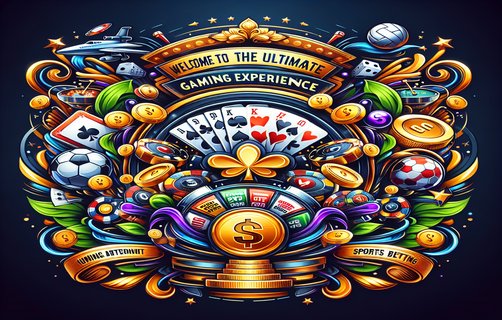Exploring the Dynamics of Multiplayer Games: A Deep Dive into Mechanics
मल्टीप्लेयर गेम्स की गतिशीलता का अन्वेषण: यांत्रिकी में एक गहरे विश्लेषण
In the realm of modern gaming, multiplayer experiences have become a cornerstone of social interaction and entertainment. Understanding the foundational elements that facilitate engaging and balanced gameplay is crucial to designers and players alike. This comprehensive analysis delves into elements such as territorial divisions, reference cards, multiplayer difficulty balancing, card draws, piece placement, and event response phases, each contributing to the intricate tapestry of a multiplayer game's success.
Territorial divisions play a pivotal role in shaping the dynamics of gameplay. They define the zones in which players can strategize and maneuver, influencing both competition and cooperation. By segmenting the game board into distinct areas, designers can create opportunities for alliances while simultaneously fostering rivalries. This layer of complexity mandates players to think critically about their movements, enhancing both strategic depth and player engagement.
Reference cards serve as essential tools within multiplayer games, providing players with quick access to rules, abilities, and game mechanics. These cards not only streamline gameplay but also empower players by allowing them to make informed decisions rapidly. The ease of referencing critical game elements reduces downtime while enhancing the overall flow of the game, thereby maintaining player immersion and enjoyment.

Another significant aspect is multiplayer difficulty balancing, which ensures that players of varying skill levels can enjoy the game. Designers often employ techniques like adaptive difficulty and matchmaking algorithms to create a fair and engaging experience. Balancing player powers and resources is critical to prevent dominance by a single player and to encourage a competitive yet inclusive environment. This balance helps maintain the excitement and tension that are hallmarks of multiplayer gaming.
Card draws introduce an element of chance and strategy, as players must adapt their tactics based on the hand they are dealt. The randomness of card draws can lead to unforeseen twists, compelling players to think flexibly and creatively. This unpredictability can enhance the replayability of a game, as no two sessions will unfold identically, keeping players coming back for more.
Piece placement mechanics add another layer of strategy, requiring players to think spatially and plan their moves in relation to others. This mechanic encourages anticipation and foresight, as each player's decisions directly impact the available options for opponents. Effective piece placement can lead to tactical advantages and can often turn the tide of the game.
Lastly, event response phases create a dynamic gameplay environment where players must react to unfolding situations. These phases ensure that players stay engaged and that the game evolves in real-time. They can introduce new challenges and opportunities, keeping every session fresh and exciting.
In conclusion, the interplay of territorial divisions, reference cards, difficulty balancing, card draws, piece placements, and event response phases crafts a rich and immersive multiplayer gaming experience. Designers who skillfully weave these elements together create games that not only entertain but also challenge players, making them eager for the next round of friendly competition.
आधुनिक गेमिंग के क्षेत्र में, मल्टीप्लेयर अनुभव सामाजिक अंतर्संबंध और मनोरंजन का एक मूलभूत हिस्सा बन गए हैं। इस पहलू को समझना जो आकर्षक और संतुलित गेमप्ले को सक्षम बनाता है, डिजाइनरों और खिलाड़ियों दोनों के लिए आवश्यक है। यह व्यापक विश्लेषण क्षेत्रीय विभाजन, संदर्भ कार्ड, मल्टीप्लेयर कठिनाई संतुलन, कार्ड ड्रॉ, टुकड़ा प्लेसमेंट, और इवेंट प्रतिक्रिया चरणों जैसे तत्वों में गहराई से उतरता है, प्रत्येक बहु-खिलाड़ी खेल की सफलता के जटिल ताने-बाने में योगदान करता है।
क्षेत्रीय विभाजन गेमप्ले की गतिशीलता को आकार देने में महत्वपूर्ण भूमिका निभाते हैं। वे खिलाड़ियों के लिए रणनीति बनाने और चलने के लिए क्षेत्रों को परिभाषित करते हैं, प्रतिस्पर्धा और सहयोग दोनों को प्रभावित करते हैं। खेल बोर्ड को विशिष्ट क्षेत्रों में विभाजित करके, डिजाइनरों को गठबंधनों के अवसर पैदा करने की अनुमति मिलती है जबकि प्रतिकूलताओं को भी बढ़ावा मिलता है। यह जटिलता की परत खिलाड़ियों को अपनी चालों के बारे में गंभीरता से सोचने के लिए मजबूर करती है, रणनीतिक गहराई और खिलाड़ी की संलग्नता को बढ़ाती है।
संदर्भ कार्ड मल्टीप्लेयर खेलों में आवश्यक उपकरण के रूप में कार्य करते हैं, जो खिलाड़ियों को नियमों, क्षमताओं और गेम मैकेनिक्स तक त्वरित पहुंच प्रदान करते हैं। ये कार्ड न केवल गेमप्ले को सरल बनाते हैं बल्कि खिलाड़ियों को तेजी से सूचित निर्णय लेने की अनुमति देकर उन्हें सशक्त बनाते हैं। महत्वपूर्ण खेल तत्वों को संदर्भित करने की आसानी डाउनटाइम को कम करती है जबकि समग्र खेल के प्रवाह को बढ़ाती है, इस प्रकार खिलाड़ी की समर्पण और आनंद बनाए रखता है।
दूसरा महत्वपूर्ण पहलू मल्टीप्लेयर कठिनाई संतुलन है, जो सुनिश्चित करता है कि विभिन्न कौशल स्तरों के खिलाड़ी खेल का आनंद ले सकें। डिजाइनर अक्सर संवहनीय कठिनाई और मैचमेकिंग एल्गोरिदम जैसी तकनीकों का उपयोग करते हैं, जिससे एक निष्पक्ष और आकर्षक अनुभव का निर्माण होता है। खिलाड़ी की शक्तियों और संसाधनों का संतुलन बनाना एकल खिलाड़ी द्वारा प्रभुत्व को रोकने और प्रतिस्पर्धी फिर भी समावेशी वातावरण को प्रोत्साहित करने के लिए महत्वपूर्ण है। यह संतुलन खेल के उत्साह और तनाव को बनाए रखने में मदद करता है, जो मल्टीप्लेयर गेमिंग के प्रतीक होते हैं।

कार्ड ड्रॉ एक मौका और रणनीति का तत्व पेश करते हैं, क्योंकि खिलाड़ियों को उस हाथ के आधार पर अपनी रणनीतियों को अनुकूलित करना होता है जो उन्हें दी जाती है। कार्ड ड्रॉ की अनिश्चितता अनपेक्षित मोड़ों का कारण बन सकती है, खिलाड़ियों को लचीला और रचनात्मक सोचने के लिए मजबूर करती है। यह अनिश्चितता खेल की पुनःसंचलनता को बढ़ा सकती है, क्योंकि कोई भी दो सत्र एक जैसे नहीं unfold होंगे, खिलाड़ियों को और अधिक की खोज में बनाए रखता है।
टुकड़ा प्लेसमेंट तंत्र रणनीतिकता की एक और परत जोड़ते हैं, खिलाड़ियों को स्थानिक रूप से सोचने और दूसरों के संबंध में अपनी चालों की योजना बनाने की आवश्यकता होती है। यह तंत्र पूर्वानुमान और दूरदर्शिता को प्रोत्साहित करता है, क्योंकि प्रत्येक खिलाड़ी के निर्णय प्रतिकूलों के लिए उपलब्ध विकल्पों को सीधे प्रभावित करते हैं। प्रभावी टुकड़ा प्लेसमेंट सामरिक लाभ की ओर ले जा सकता है और अक्सर गेम के रुख को बदल सकता है।
आखिरकार, घटना प्रतिक्रिया चरण एक गतिशील गेमप्ले वातावरण बनाते हैं जहां खिलाड़ियों को विकासशील परिस्थितियों का उत्तर देना होता है। ये चरण सुनिश्चित करते हैं कि खिलाड़ी व्यस्त रहें और खेल वास्तविक समय में विकसित हो। वे नए चुनौतियों और अवसरों को पेश कर सकते हैं, जिससे हर सत्र को ताजा और रोमांचक रखा जा सके।
निष्कर्ष में, क्षेत्रीय विभाजन, संदर्भ कार्ड, कठिनाई संतुलन, कार्ड ड्रॉ, टुकड़ा प्लेसमेंट, और घटना प्रतिक्रिया चरणों का जटिल अंतर्संबंध एक समृद्ध और संलग्न मल्टीप्लेयर गेमिंग अनुभव तैयार करता है। डिजाइनर जो इन तत्वों को कुशलता से एक साथ बुनते हैं, ऐसे खेल बनाते हैं जो न केवल मनोरंजन करते हैं बल्कि खिलाड़ियों को चुनौती देते हैं, उन्हें मित्रता की प्रतिस्पर्धा के अगले दौर के लिए उत्सुक बनाने में।

comments
GamerGuru123
This analysis brings clarity to the complexities of multiplayer games! Love how it covers all aspects.
StrategistSavvy
Understanding balancing strategies is crucial! This should be essential reading for game designers.
CardNinja
Really appreciate the emphasis on card draws; it's what keeps games interesting!
PieceMaster
Great insights into piece placement! It's often overlooked but sooo important!
EventWatcher
Event response phases add so much excitement! This article captures that perfectly!